Development of landing craft from ship to shore
In addition to Spanish fleet Navantia shipbuilding group sold its LCM-1E high-speed landing boat under the designation LCM to the Australian (12 pieces) and the Turkish fleet (4 pieces). In both fleets, the LMC-1E will operate with a helicopter carrier type Juan Carlos I
Around the world, a growing fleet of amphibious assault vessels, ranging from traditional landing and landing troops on the coast to humanitarian and disaster relief operations, complicated by many threats, requires even higher performance landing missions. Ironically enough, but their development and acquisition are hampered by shrinking budgets for development and acquisition.
On the horizon, amphibious assault fleet
Nowadays, ship-to-shore delivery vehicles or airborne assault vehicles (ICE) include a whole range of configurations, from the traditional dock to the hovercraft. Engines must develop high speeds and have a greater cruising range for over-the-horizon tasks, plus sufficient payload capacity in order to reduce the operation time. These requirements naturally spill over into other improvements, including efficient and integrated equipment C4N (command, control, computer, communication and navigation - command, control, communication and computing), crew comfort and passive and active protection not only for personnel but and platforms. Shipbuilders and military shipbuilding around the world respond to these demands with advanced and traditional solutions depending on the available budgets.
US led needs
At the end of August 2014, the Naval Systems Command Navy issued a contract for the construction of the first airborne assault landing craft. The Landing Craft Air Cushion 101 is the second hovercraft in the ICE class. It is intended for the planned replacement of currently outdated LCAC vessels, which, nevertheless, maintain a life extension program.
An industrial group led by Textron, which includes aluminum producer Alcoa Defense and information and navigation and information systems specialist L-3 Communications, is currently working on a detailed design of an instructional test engine (LCAC 100) to be delivered in February 2017. . The 101 vessel will be the first of the 72 engine with an upcoming launch scheduled for 2020. Although outwardly, the new vessel resembles the current LCAC internal combustion engine, however, it has been significantly improved due to the estimated service life extended to 30 years (excluding extending the service life beyond these standard 30 years). Capacity increased by installing two (instead of four) new, more powerful gas turbine engines Rolls-Royce MT7 (a modification of the Osprey convertible plane engines), crew size and workload were reduced, and reliability and serviceability were increased.
ICE LCAC is currently in service with the US Navy
In August, the United States Navy 2014 issued a contract to build the first serial engine. LCAC 101 will be the first of the 72 ships, the delivery of which should start in August 2017 of the year, and the initial date of entry into the troops is scheduled for 2020 year. The construction of this training vessel is expected to start in November 2014.
The fleet of hovercraft LCAC of the US Navy will undergo a life extension program. In the photo, the new Mobile Landing Platform landing platform Montford Point is being successfully tested by docking with the amphibious dock ship near the coast near Camp Pendleton Marine Corps
An internal combustion engine will be able to transport 74 tons, for example the Abrams tank, when the Sea State 3 sea wave (wave height 0,5-1,25 meter) is at sea at a speed exceeding 40 nodes to the coast, which is approximately xNUMX nautical miles. The US Navy also plans to begin purchasing the new ICE Surface Connector (X) Replacement in 25 in order to replace the fleet with the outdated Landing Craft Utility (LCU) 2019. The so-called analysis of alternatives, conducted in the first half of 1610, confirmed the low riskiness of the LCU project, according to which it is planned to replace the existing 2014 of the 32 vessel on a one-to-one basis. However, the fleet and the Marine Corps are exploring concepts to eliminate the shortage of landing craft in the coming years. This summer, during the development of advanced methods of warfare in the framework of the international exercises Rimpac 1610 under the leadership of the US Armed Forces, the Marine Corps experienced a half-scale prototype of the ultra-heavy amphibious ICE Ultra Heavy-lift Amphibious Connector (UHAC). The project is funded by the naval research management and is being built by Navatek; a full-scale vessel will have a load capacity of three times greater than that of the LCAC and will be able to overcome the swell of the sea with a wave height of more than three meters.
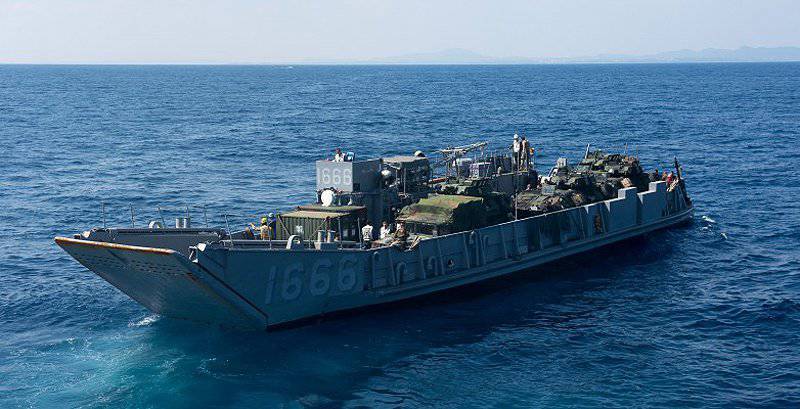
The so-called analysis of alternatives conducted in the first half of 2014 of the year confirmed the low riskiness of the LCU project, which provides for the replacement of existing 32 LCU 1610 vessels (pictured) on a one-to-one basis
During the development of advanced methods of combat operations in the framework of the Rimpac C2014 exercises in the summer of 2014, the Marine Corps tested a half-scale prototype of the UHAC internal combustion engine currently being developed
New European projects
The French ship industry has several innovative projects in this area. Shipyard Constructions Industrielles de la Mediterranee (Cnim) has developed and patented a new concept of a high-speed amphibious assault ship capable of performing work of ships of the type LCU, LCT and LST (respectively, the universal engine, ICE dock and large ICE dock). The project received the designation L-CAT (landing catamaran - landing catamaran); it is based on the concept of variable precipitation when the vessel goes as a catamaran in open water, and for landing ashore or entering the dock cell is transformed into an amphibious barge, all thanks to a movable central platform that rises and falls to change buoyancy. Four EDA-R ships (Engins de Debarquement Amphibie – Rapides or amphibious amphibious assault ship - fast) based on L-Cat, ordered by the French arms procurement agency in 2009 and built by the French shipyard Socarenam, became part of the fleet in 2011-2012 years.
The French company Cnim offers a family of ships based on the L-Cat concept, including the EDA-R (pictured), part of the French fleet
The vessel has a length of 30 meters and a width of 12 meters. It consists of two hulls made of aluminum alloy, between which is located a movable central platform with an area of 126 м2, capable of receiving cargo weighing up to 80 tons. When the platform is raised, four MTU 12V 2000 M93 diesel engines power four MJP 650 water cannons, which allow a maximum speed of 25-30 units with no load or 18 units at maximum load. Cruising range is 400 nautical miles with 12 knot speed. The crew from 4 to 8 is a man with the possibility of transporting another 40 man. This ship, working in conjunction with the BPC (conventional ICE) ships of the Mistral class and the TCD (ICE dock) of the Sirocco class, has demonstrated its ability to interact with the landing craft of the US Navy as well.
In the UK, the Griffon Hoverwork hovercraft for military and paramilitary forces include the Griffon 8000TD, the most popular medium-duty ship and the Griffon 2000TD, the ship with the largest cruising range (pictured in the TDX version, armed with British commandos)
However, the company DCNS has developed a more traditional landing craft LCM (Landing Craft Medium - landing craft average), which was chosen by the Russian fleet to equip two universal BPC helicopter carriers of Vladivostok class. The final retrofit must be carried out by the STX shipyard in Saint-Nazaire (a DCNS subcontractor) in cooperation with the Russian United Shipbuilding Company. Four ships under the new designation CTM NG (Chaland de Transport de Materiel de Nouvelle Generation - landing craft of the new generation) should be delivered with the first ship of Vladivostok, which means that improvements have been made in comparison with the CTM of the French fleet. The length and width of the vessel are respectively approximately 27 and 7 meters in comparison with the length of 23 and the width of 6,3 meters of ships from the French fleet; they are distinguished by roll-on / roll-off capabilities (horizontal loading and unloading thanks to the bow and stern ramps, such vessels are also called vessels of the ro-roker or ro-ro), the crew compartment has been moved to port. The hull structure was refined to improve the seaworthiness, without load, the maximum travel is now around 20 nodes. An order for the next 4 ship CTM NG is expected to equip the second helicopter carrier Sevastopol.
British naval shipbuilding has always been a leader in new projects for amphibious applications, it has a long and successful tradition of building hovercraft, which are implemented in the newest Pascat prototype program (Partial Air Cushion Supported Catamaran - partially supported by an airbag). Griffon Hoverwork has developed and is engaged in the construction of air-cushion landing craft for the commercial and military / militarized areas. The military mission portfolio includes the engine with the largest supply of the Griffon 2000TD, capable of carrying up to 16 soldiers at the speed of the 43 knot, as well as the most popular medium-capacity ICE Griffon 8000TD, which can receive from 8 to 10 tons depending on configuration or Up to 56, an airborne man plus a crew of two. Recently, orders were received from the Colombian and Peruvian fleets, as well as the coast guard of South Korea and India. Britain’s long-term need for a high-speed landing craft with a trans-horizon (30 nautical miles from shore) capable of replacing the in-service Mk 10 LCU universal ships led to an evaluation of the project of the vessel with dynamic support (SES) based on the ICE Pascat. Qinetiq leads the group, which includes the Griffon Hoverwork and the BMT Group. The Caimen FLC family from the BMT Group is based on a monolithic aluminum-alloy case with three noses and a nasal ramp located high enough above the waterline but folding in order to obtain an excellent view from the wheelhouse. The length and width are respectively 33 meters and 7,7 meters; Caimen 90 Fast FLC can take a load of 90 tons and at the same time develop the speed of the 22 knot, and without a load all 40 knots.
In addition to the Spanish fleet, Navantia sold its ship LCM-1E under the designation LCM to the Australian and Turkish fleets in quantities of respectively 12 and 4 units. The first four LCM-1Es, delivered in April 2014 of the year, work in conjunction with the first Canberra-class universal helicopter carrier
LCM Italian fleet during a rescue operation for illegal immigrants from Africa. This ICE is the basis of the LCM vessel built in Algeria for the new universal helicopter carrier for the Algerian fleet in accordance with the technology transfer contract with the Italian shipbuilding company Orizzonte.
The Spanish shipbuilding group Navantia offers today a more traditional high-speed amphibious assault ship, which has been selected or is in service with several large fleets. In order to replace the LCM-8 standing on the arms of the Spanish fleet, this shipyard designed the LCM-1E for the landing landing dock of the Galicia LPD class and the universal landing craft Carlos I. “Ro-Ro” internal combustion engine (horizontal loading and unloading with a ramp) has a length of 1 meter and a width of 23,3 meter, the crew of a human 6,4, integrated equipment C4N (command, control, computer, communication and navigation - command, control, communication and computing) allowing landing operations for more than 4 nautical miles from the shore. On the LCM-20E, there are two MAN diesel engines that allow you to develop the maximum travel of the 1 node, and with maximum loading of the 22 nodes. According to the company Navantia can take the main battle tank, up to six cars Humvee or 13,5 soldiers. Due to its compatibility with the Juan Carlos I class helicopter carriers, the LCM-170E engine was also bought by Australia, in addition to the Spanish fleet. These 1 ships were acquired to work with two Canberra-class amphibious assault carriers (four LCM-12E for each ship). The first four ships arrived in Australia in April 1. In December 2014, the Turkish Defense Secretariat announced that the shipbuilding companies Navantia and Sedef were selected to clarify the details of the project and the construction of LHD based on Juan Carlos I and four landing craft LCM-2013E. In addition, technology will be transferred for the construction of these vessels in Turkey with the participation of the Spanish Navantia. Signing of the contract is expected in the coming months.
One of the leading European shipbuilders, the Damen group, has built LCM and LCVP for the Netherlands fleet in addition to a series of amphibious assault ships, the Enforcer, also selected by several fleets. Damen also manufactured a new joint support ship for the fleet of this country, which recently joined the fleet.
In parallel with the development of its own hovercraft, China also bought four huge Ukrainian ships, the Bison (1232.2 Project), modified to local requirements, two of them have already been delivered. Two others will be built in China with Ukrainian help.
In early September, the Italian joint venture Orizzonte Sistemi Navali (Fincantieri 51% and Selex ES 49%) delivered the new universal helicopter carrier Kalaat Beni-Abbes with a displacement of 8800 tons to the Algerian fleet, built at the Fincantieri shipyard in La Spezia. The contract signed between Orizzonte and Algeria in 2011 also provides for a full cycle of training and technology transfer for the production of a landing craft in that country. Orizzonte confirmed that the company also supervised and coordinated the design and construction of three LCM ships for use with the new landing craft; in addition, she transferred technology to these vessels to Algeria. To the full satisfaction of the local fleet, the vessel was built at the shipyard of the Algerian ECRN in Mers-el-Kebir. Their design is based on the Italian fleet LCM ICE, which were built on the Italian shipyard Cantiere Navale Vittoria. The length and width are respectively 19,5 meters and 5,1 meters; two Iveco diesel engines are installed on these internal combustion engines, which make it possible to develop the maximum speed of 9 knots. With a total tonnage of 65 tons and a maximum tonnage of 30 tons, these vessels comply with the rules of Rina (Society of Shipbuilders of Great Britain). They are equipped with an armored wheelhouse to provide the necessary level of protection, as well as a full communication and navigation kit.
Other European shipbuilding groups offer landing craft of various sizes. These include the Dutch shipyard Damen (delivered LCM and LCVP to the Netherlands fleet), the Turkish shipyard Adik (delivered eight amphibious vessels of the Adik class to the Turkish fleet in 2009-2013), a new joint venture Kership between Piriou and DCNS (proposed by LCT-50 project) 650 tons) and the Portuguese shipyard Arsenal do Alfeite with a new family of larger landing platforms LC560 with a displacement of up to 900 tons.
The Russian shipbuilding industry is currently building new Dugong class high-speed landing ships (Project 21820). These ships were created by the Nizhny Novgorod Design Bureau. They used the so-called technology of an air cavity with a dynamic change in airbags, when the thickness of the compressed air layer under the bottom of the vessel depends on the movement of the vessel. This landing ship is 45 meters long, 8,6 meters wide and has a displacement of 280 tons; it can reach a maximum speed of 35 knots and take on board up to three Russian main combat tanks or five armored vehicles with a total mass of 140 tons. All three vessels of this project are at different stages: the third vessel was laid in June 2014, and the first vessel of the project is already undergoing factory tests in the Baltic Sea.
Newest solutions in different parts of the world
The increasing number of amphibious operations, crisis response operations, humanitarian aid and disaster relief, especially in the Asia-Pacific region, forces regional fleets and industry to develop their own capabilities in different ways: through the purchase of foreign systems, local development or technology transfer agreements.
In the Asia-Pacific region, Singapore and its shipbuilding industry were the first to develop landing craft and delivery systems. Today, Singapore Technologies Marine offers for shallow water high-speed delivery vehicles with water-jet propellers of the Brave series. This series of internal combustion engines is designed to work with the landing ships-docks of the Endurance series of the same shipyard. Smaller models of Brave-4T and 18T are capable of carrying loads of 4 and 18 tons, respectively, at speeds above 25 nodes. They performed the important tasks of transporting people and heavy equipment between the ships of the Endurance class of the Singapore Navy and the coast during a tsunami relief operation in 2004. Other three models 27-meter Brave 30T, 42-meter 75T and 47-meter 150T can carry loads of 30, 75 and 150 tons respectively on the open deck area 90, 160 280 m2 and at speeds ranging from 18 to 25 nodes. These speedboats are candidates for larger Endurance-160 LHD amphibious assault carriers.
China, being the buyer of the Ukrainian Bison (1232.2 Project), has accepted deliveries of two such vessels. The remaining two should be built on the local shipyard with the help of the Ukrainian side.
The need to equip the newest amphibious assault ships Banjarmasin and BandaAceh, which were part of the Indonesian fleet in 2009 and 2011 respectively, pushed the fleet to sign in 2014 a year with the Indonesian shipyard PT Tesco Indomaritim to build two universal internal combustion engines. Their length is 24,3 meters, they are capable of accepting up to 26 tons of equipment or 100 manpower, the maximum travel speed is 40 knots (without load) and the economical cruising speed of 20 knots.
In the United Arab Emirates, the shipbuilding company Abu Dhabi Ship Building (ADSB) announced during the IDEX 2013 exhibition that it was chosen to fulfill the requirements of the Kuwaiti fleet for high-speed internal combustion engines. Under this program, two delivery vehicles with a length of 64 meters will be delivered, one 42 meters in length, plus five 16-meter internal combustion engines being built at the ADSB shipyard in Abu Dhabi. This important program is based on previous programs for the fleets of Bahrain and the United Arab Emirates. The fleet of Bahrain received two vessels with a length of 42 meters and two with a length of 16 meters, and the fleet of the United Arab Emirates incorporates two vessels of the same type with a length of 42 meters. Construction for Kuwait began in 2013, and the program will last about two years.
Colombian shipbuilding company Cotecmar delivered the first ICE from the Buque Desembarco Anfibio (BDA) series for the Colombian fleet in May 2014. This vessel with a total displacement of about 600 tons has a length of 45,8 meters and a width of 11 meters. It can carry loads of up to 210 tons or passengers 322 during military, paramilitary and humanitarian operations.
The company Singapore Technologies Marine offers high-speed amphibious assault vehicles with water-jet propellers of the Brave series of different payloads for work in shallow water. In the figure, models 4T and 18T of the Brave series, designed to transport 4 and 18 tons, respectively, with a speed of more than 25 nodes
Materials used:
www.armada.ch
en.wikipedia.org
www.textron.com
www.navy.mil
www.cnim.com
en.dcnsgroup.com
www.navantia.es
www.stengg.com
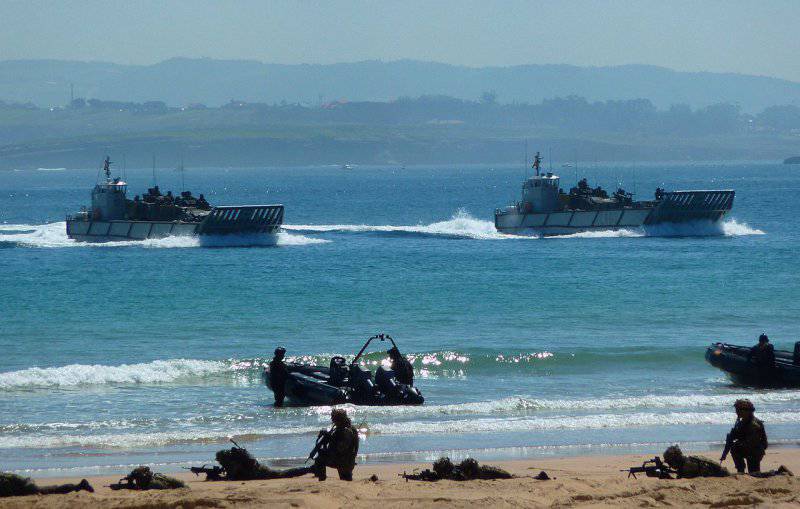
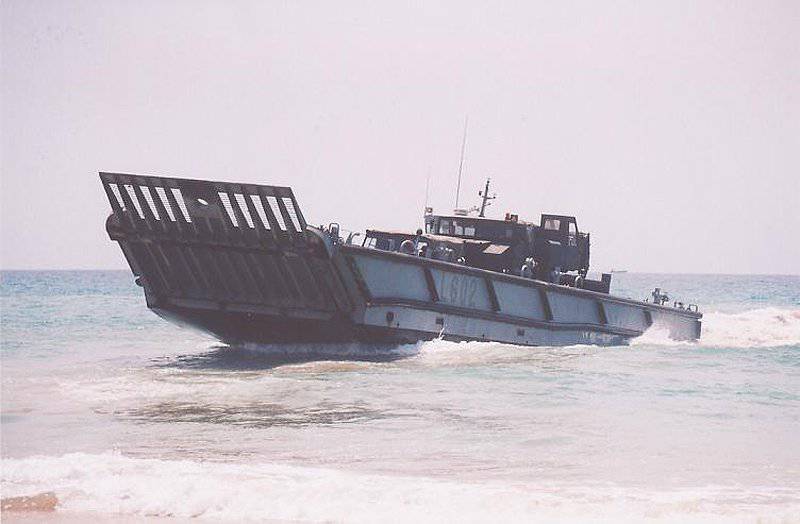

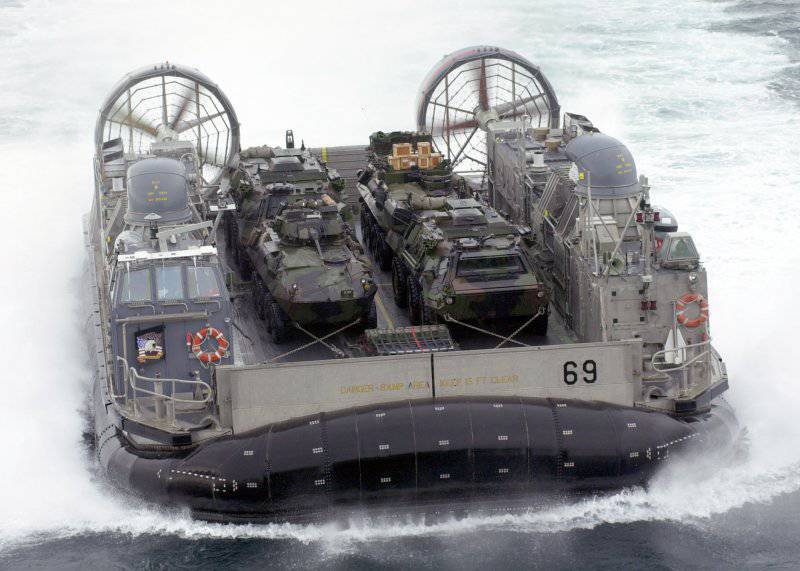
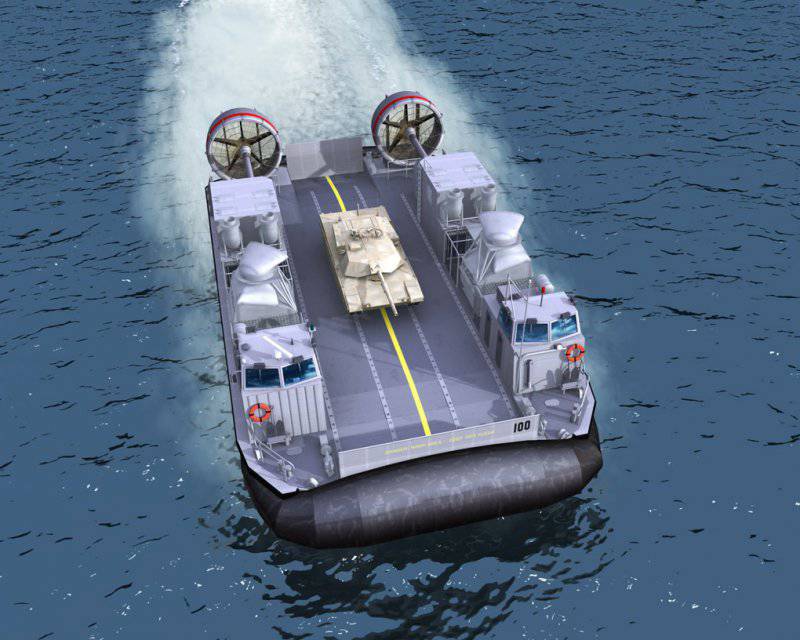
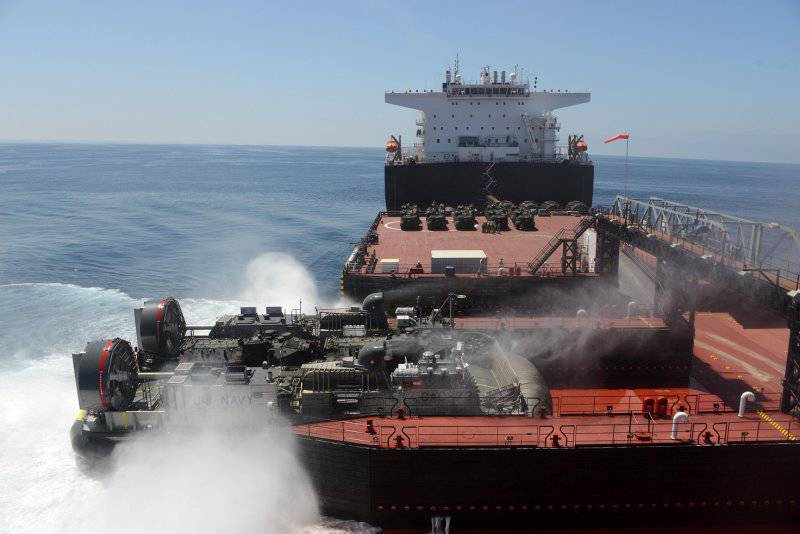
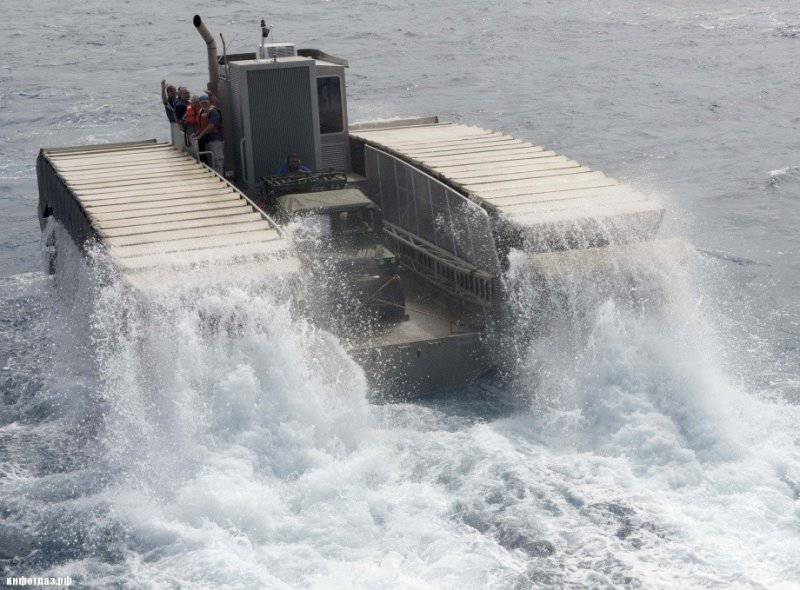
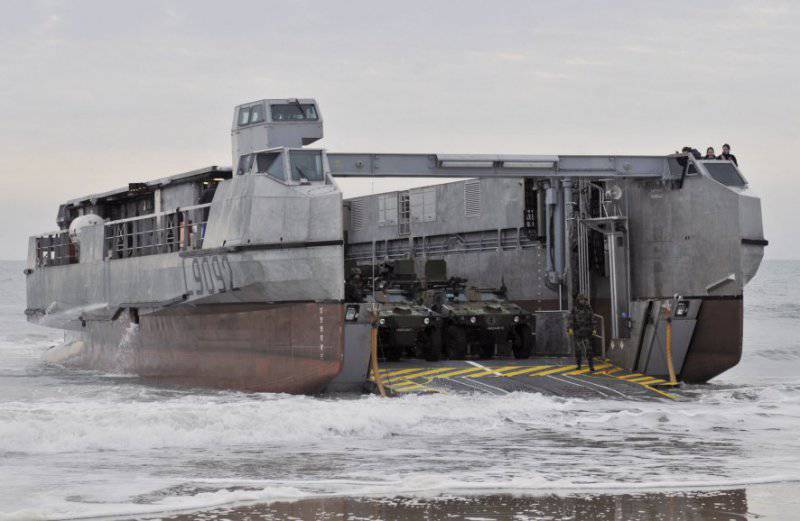
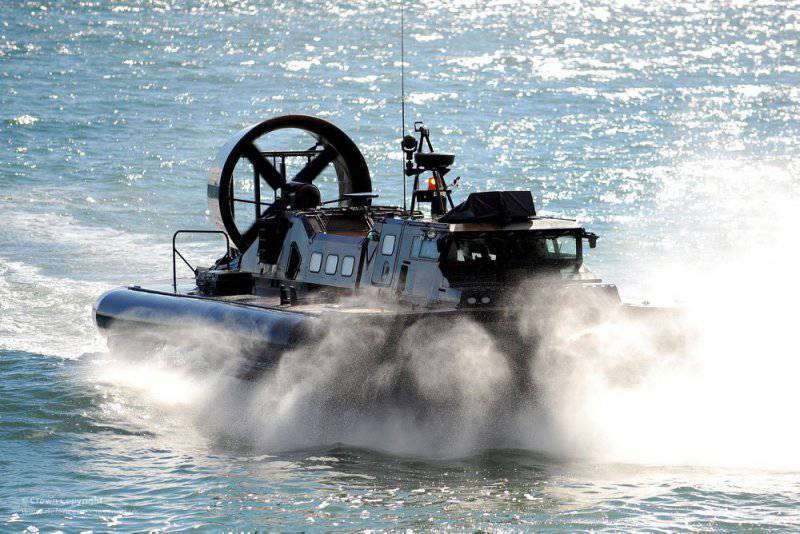
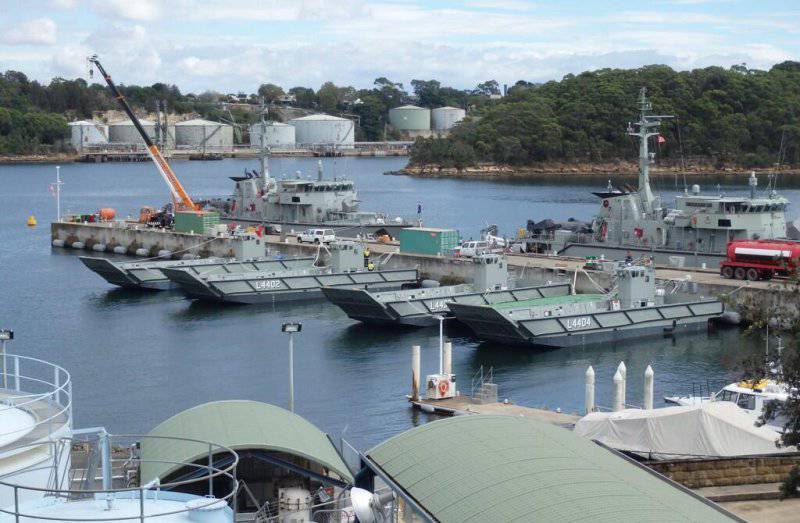
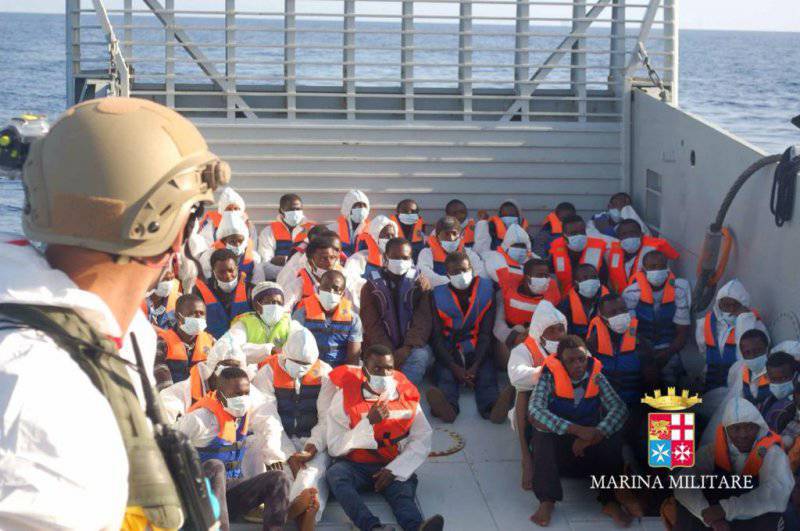
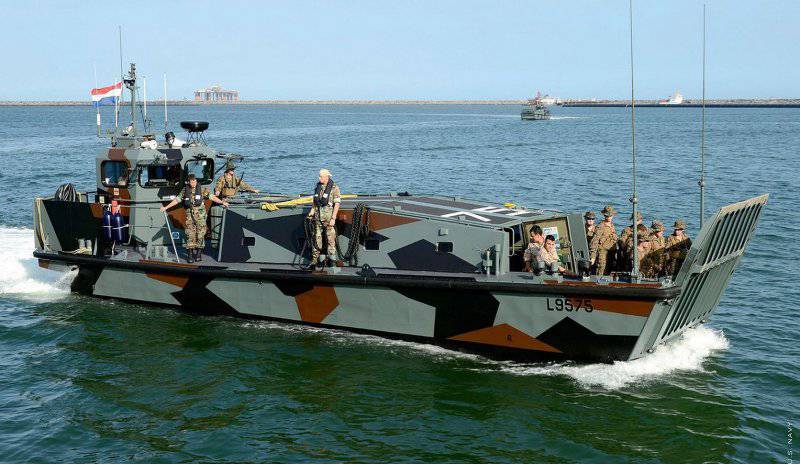
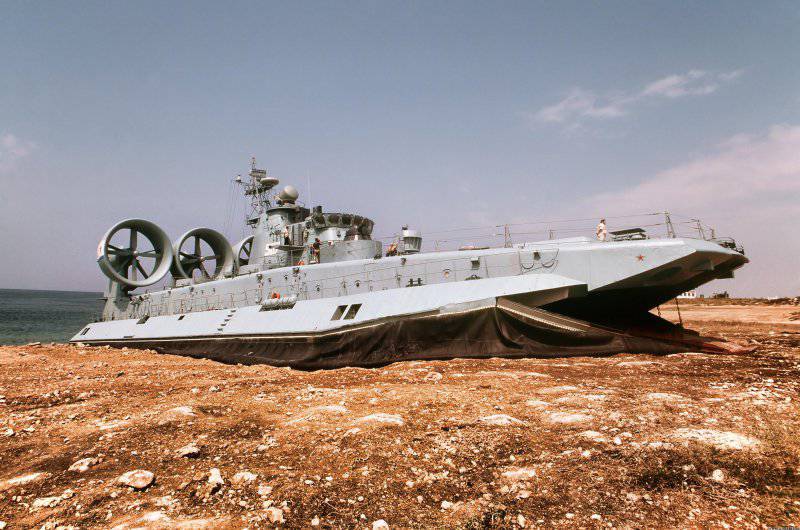
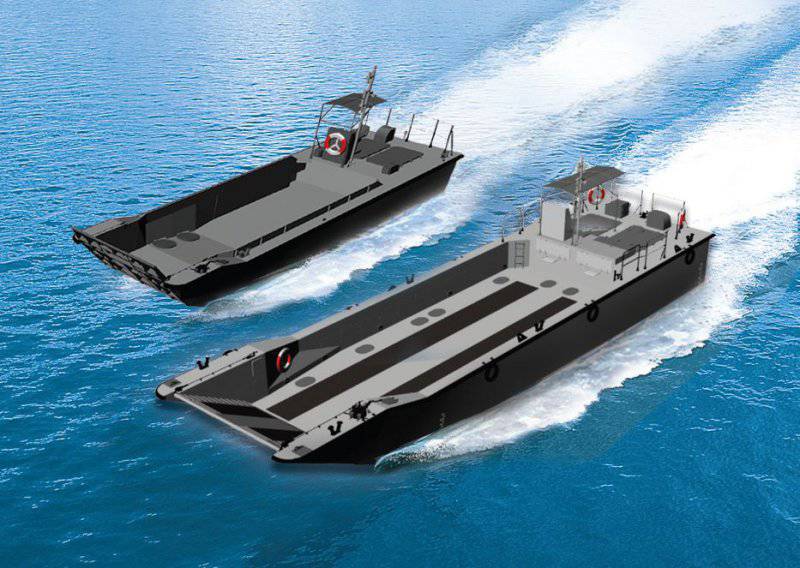
Information